WWII 1942 Allied "OSLO" Strategic Bombing Campaign Mission Map















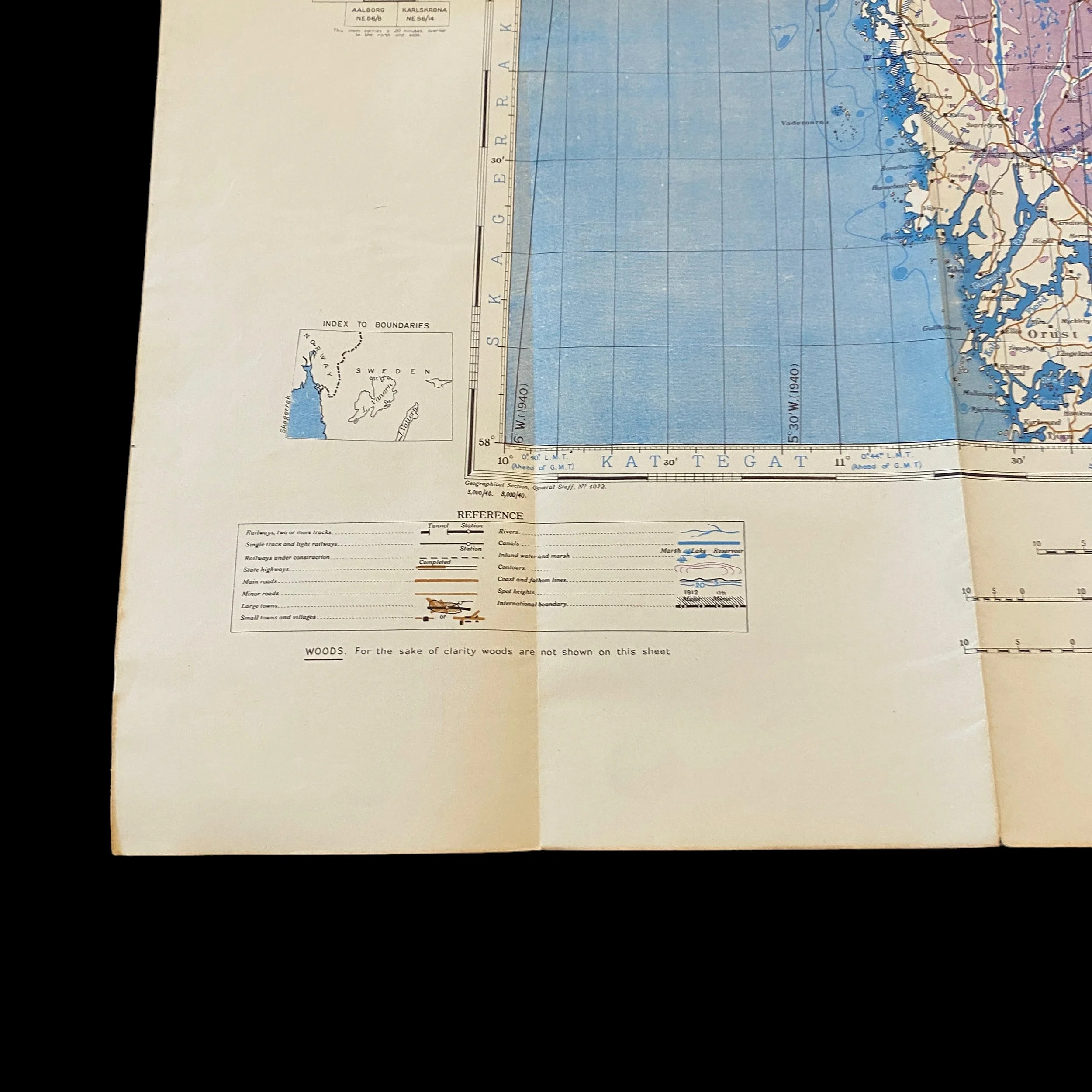



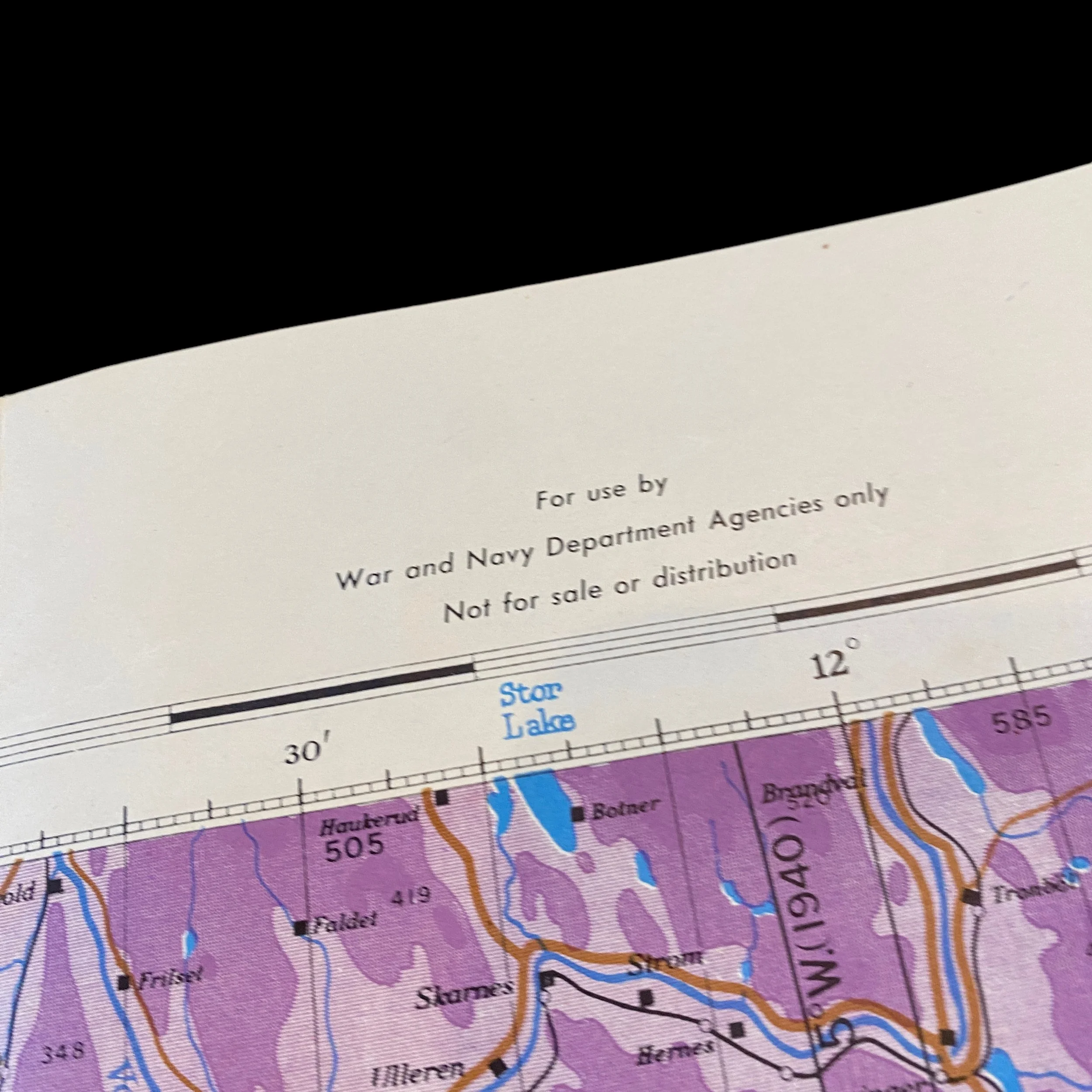



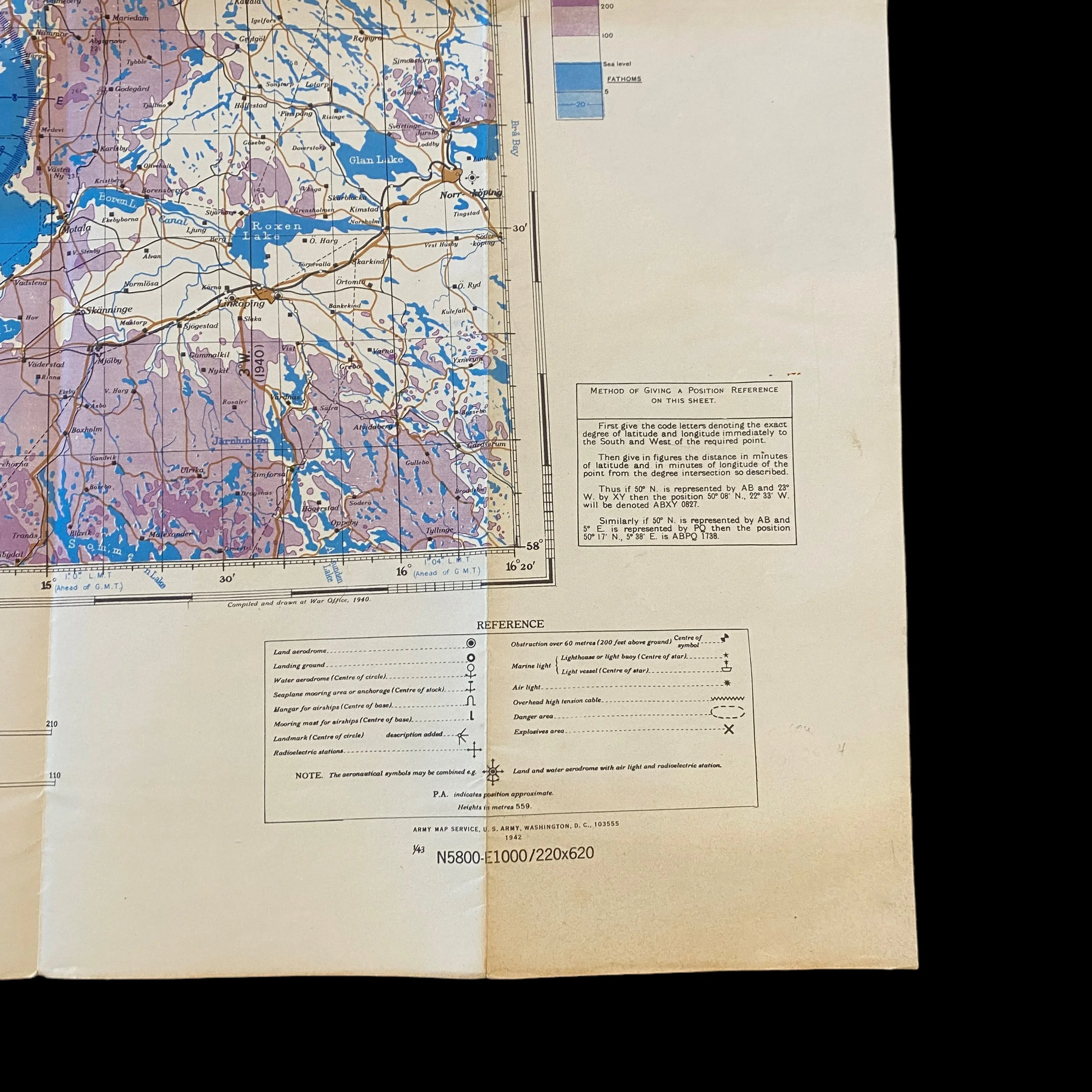
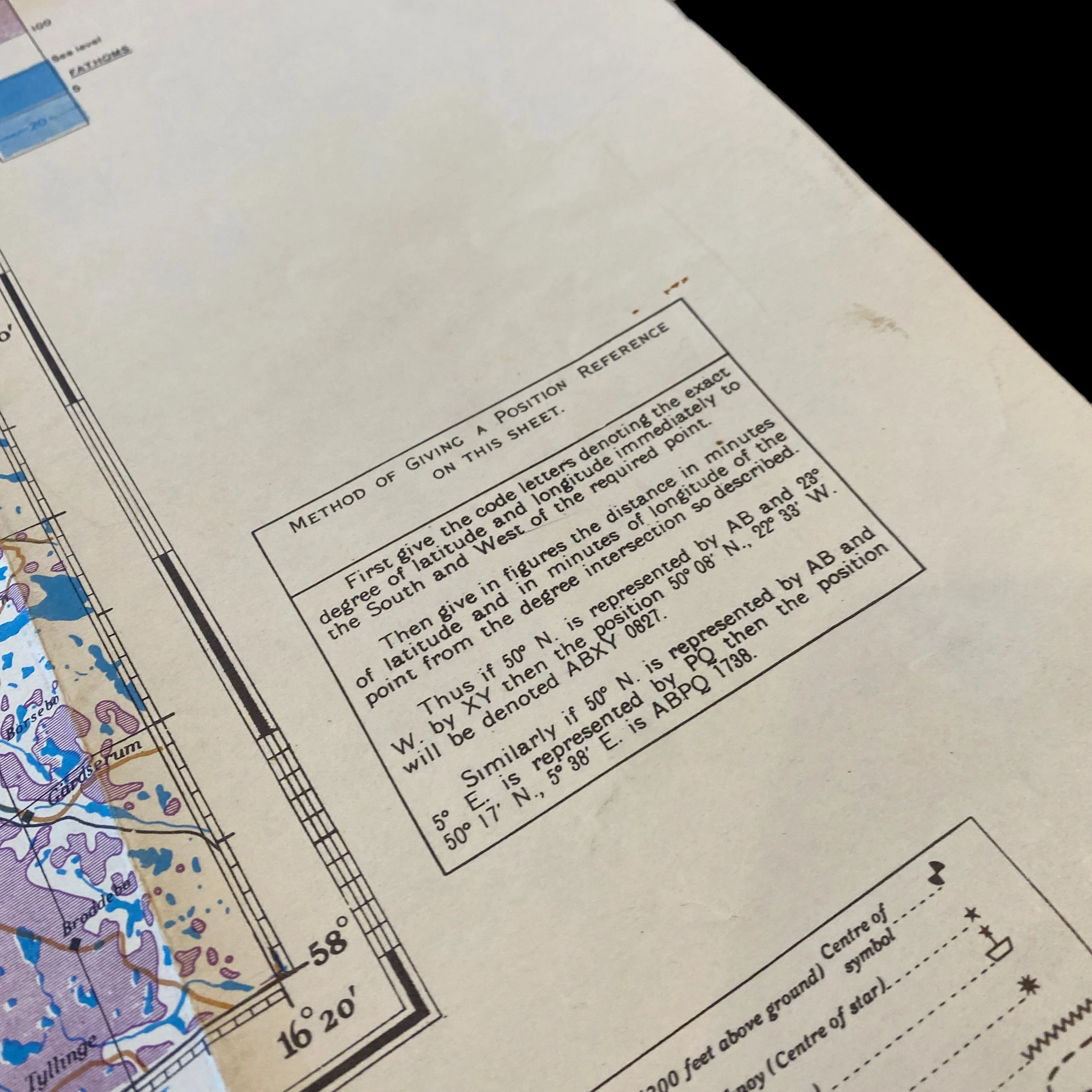




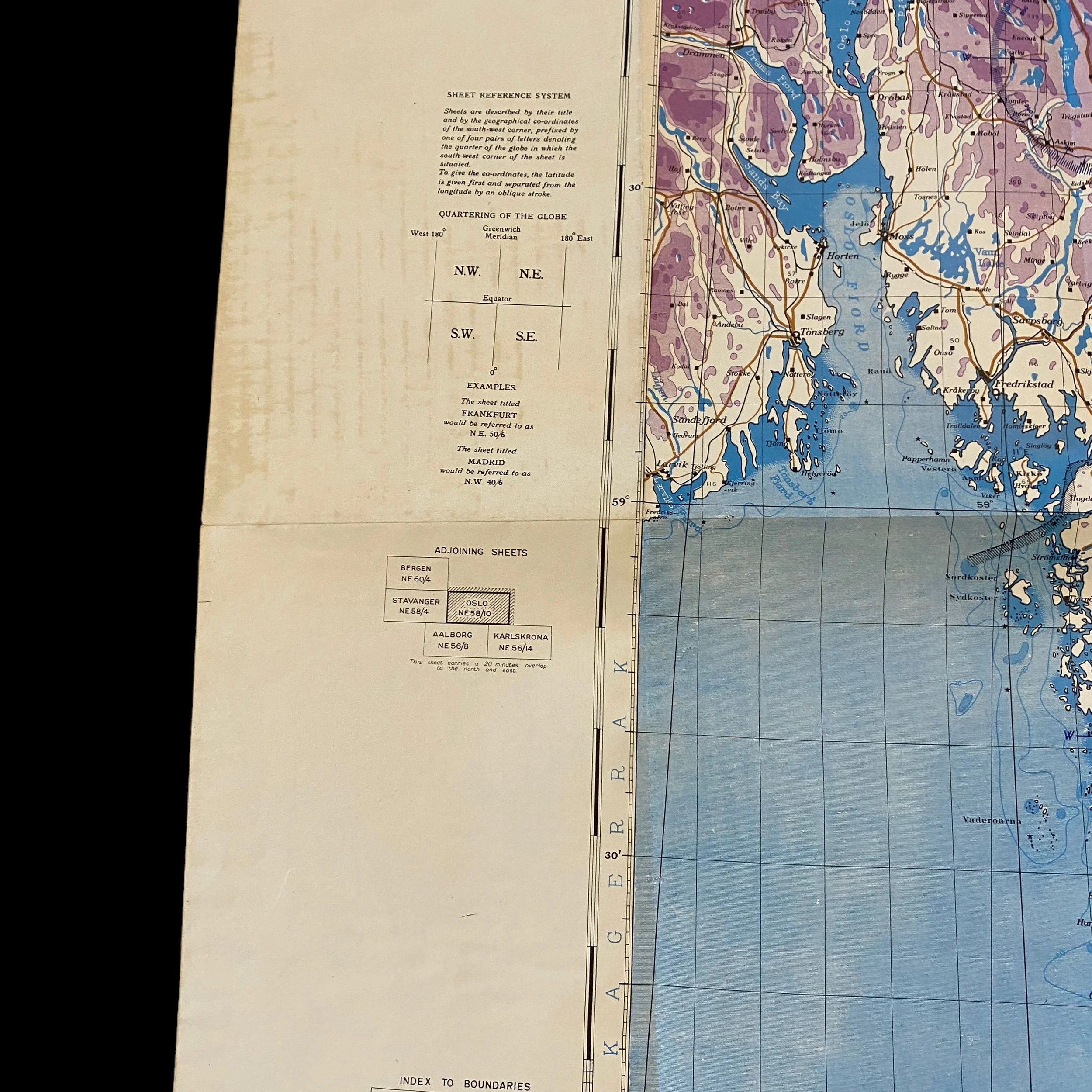

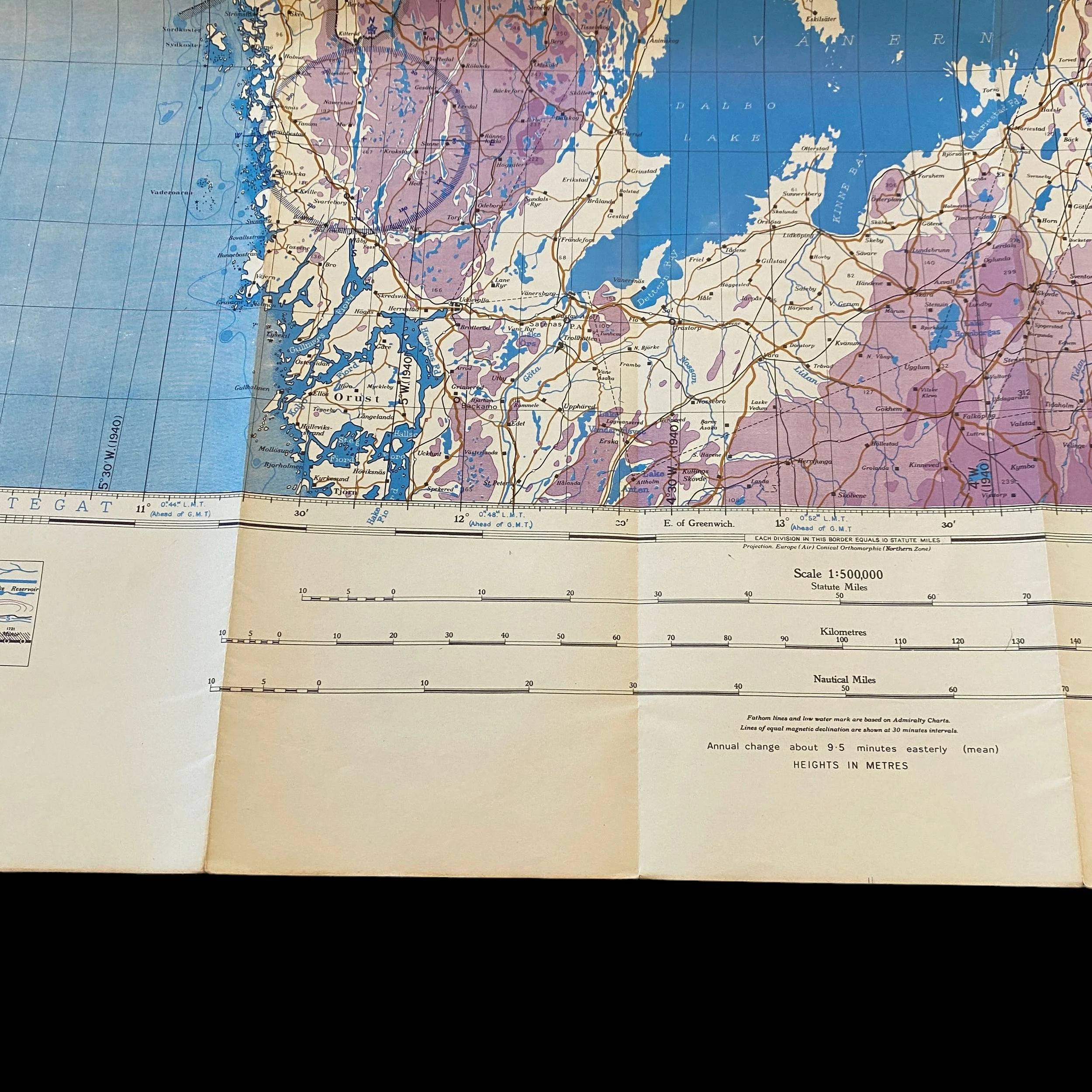


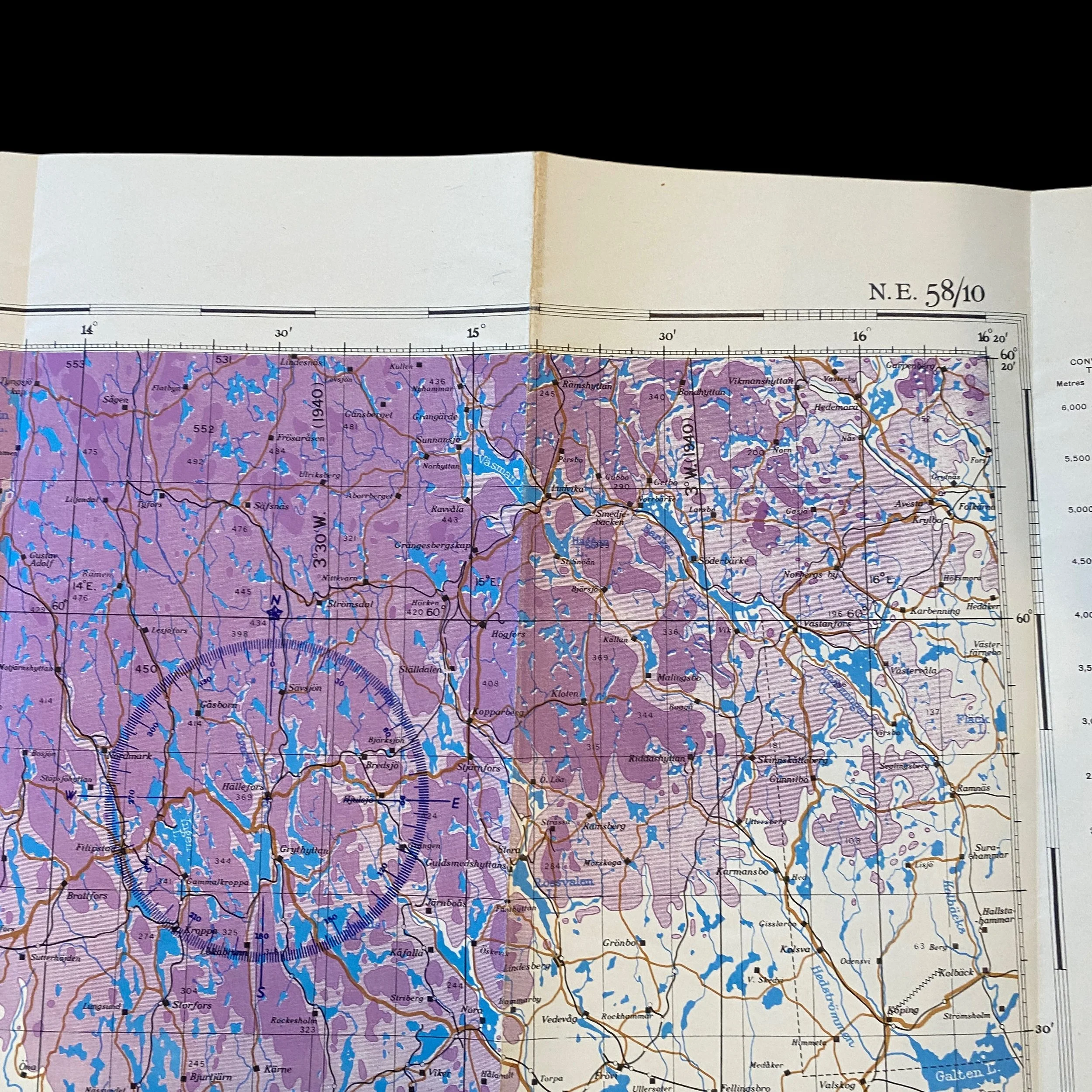


WWII 1942 Allied "OSLO" Strategic Bombing Campaign Mission Map
Comes with C.O.A.
*The Oslo Mosquito raid (25 September 1942) was a British air raid on Oslo, Norway, during the Second World War. The target of the raid was the Victoria Terrasse building, the headquarters of the Gestapo. It was intended to be a "morale booster" for the Norwegian people and was scheduled to coincide with a rally of Norwegian collaborators, led by Vidkun Quisling. The raid is also known for it being the moment when the Royal Air Force revealed the existence of the Mosquito aircraft to the British public, when the BBC Home Service reported on the raid the following day.The operation was carried out by four de Havilland Mosquito aircraft of No. 105 Squadron RAF, led by Squadron Leader George Parry, flying with navigator Flying Officer "Robbie" Robson. The other three crews consisted of:
Flight Lieutenant Pete Rowland and Flying Officer Richard Reilly
Flying Officer Alec Bristow and Pilot Officer Bernard Marshall
Flight Sergeant Gordon Carter and Sergeant William Young.
In order to shorten the mission distance, the four aircraft were flown to RAF Leuchars in Fife, Scotland, where they were refuelled and loaded with four delayed action 500-pound (230 kg) bombs each.
World War II was marked by a series of intense and highly strategic bombing campaigns that played a significant role in the ultimate Allied victory. One critical aspect of these campaigns was the role of air maps, which were indispensable tools for navigators on bombing raids in the European Theater. These maps were more than just pieces of paper; they were vital instruments that enabled Allied forces to achieve their military objectives while minimizing the loss of human lives and resources.
The development of accurate air maps was an extensive and sophisticated process during World War II. These maps were designed to serve multiple purposes: to provide navigators with critical information on the geographical terrain, to identify target locations, and to facilitate escape and evasion. The creation of Allied air maps involved a combination of cartography, aerial photography, intelligence gathering, and skilled interpretation.
Cartography: Expert cartographers played a crucial role in creating detailed air maps. These professionals carefully pieced together various sources of data, such as pre-war maps, geographical surveys, and information from resistance movements. They were responsible for accurately representing geographical features, such as rivers, forests, mountains, and cities, on the maps. The resulting cartographic accuracy was essential for safe and efficient navigation during bombing raids.
Aerial Photography: Aerial reconnaissance and photography were indispensable in updating and supplementing existing maps with real-time information. Allied planes flew over enemy territories, capturing photographs that provided critical details about the landscape, enemy positions, and potential targets. These photographs were then used to update air maps and ensure their accuracy.
Intelligence Gathering: Intelligence agencies, such as the Office of Strategic Services (OSS) in the United States and the Special Operations Executive (SOE) in the United Kingdom, played a vital role in providing critical information for the creation of air maps. They gathered data on enemy positions, troop movements, and infrastructure, which was incorporated into the maps to help navigators make informed decisions.
The Content of Allied Air Maps
The content of Allied air maps was comprehensive and designed to assist navigators in every aspect of their mission. These maps were much more than simple geographical representations; they contained a wealth of information critical for a successful bombing raid.
Target Identification: One of the primary purposes of air maps was to pinpoint enemy targets. Bombing raids were highly strategic operations, and navigators needed precise information to locate and identify their targets accurately. Maps marked with target locations, such as factories, airfields, bridges, and military installations, helped navigators navigate the skies and execute their missions effectively.
Flight Paths: Air maps also included predetermined flight paths that ensured navigators followed a specific course to reach their targets and return safely to base. These paths were marked with checkpoints and navigational aids, such as beacons and landmarks, to guide the aircraft during the mission.
Evasion Routes: Recognizing the dangers of enemy anti-aircraft defenses and fighter planes, air maps included information on potential evasion routes. Navigators had access to alternative paths and safe zones, allowing them to evade enemy fire and return to base more safely.
Weather Data: Weather conditions were a significant factor in the success of bombing raids. Allied air maps included critical weather data, such as cloud cover, wind speed, and temperature, which influenced the decision to proceed with a mission or abort it.
Impact on Bombing Raids
The use of Allied air maps had a profound impact on the effectiveness of bombing raids in the European Theater. These maps were more than just navigational aids; they significantly contributed to the strategic success of Allied air campaigns in several ways:
Precision Targeting: Accurate air maps allowed navigators to precisely locate and target enemy infrastructure and military assets. This precision minimized collateral damage and civilian casualties, aligning with the Allies' goal to conduct strategic bombing rather than indiscriminate attacks.
Increased Survivability: Evasion routes and safe zones marked on air maps provided navigators with a higher chance of survival during bombing raids. The knowledge of alternative paths and escape routes was crucial in evading enemy defenses and returning to base safely.
Efficient Resource Allocation: The use of air maps allowed for more efficient allocation of resources, such as aircraft, munitions, and fuel. This was vital, especially in a time when resources were often limited, and the war effort demanded careful planning and execution.
Psychological Impact: The confidence that accurate air maps instilled in navigators and bomber crews played a psychological role in their performance. Knowing they had the best available tools at their disposal boosted morale and contributed to the overall effectiveness of bombing raids.
Allied air maps were indispensable tools for navigators on bombing raids in the European Theater during World War II. The meticulous creation and comprehensive content of these maps were instrumental in the success of the Allied air campaigns. They facilitated precise targeting, increased survivability, and efficient resource allocation, contributing significantly to the eventual victory of the Allies. The story of Allied air maps serves as a testament to the importance of meticulous planning and innovation in wartime operations and highlights the crucial role that technology and intelligence played in shaping the course of history.
Oslo During WWII:
Oslo, the capital of Norway, played a significant but often overlooked role during Allied aerial raid missions in World War II. While not as prominent as some other European cities, Oslo's strategic importance cannot be underestimated. This essay will explore the city's significance in the context of Allied aerial raids and its role in the broader scope of the war.
When discussing World War II, it's common to focus on major battlegrounds and cities that suffered the most destruction, like London, Berlin, or Stalingrad. However, it's essential to recognize that the war was not limited to battles on land; it extended to the skies. Aerial warfare was a crucial component of the conflict, and Oslo's role in this aspect was notable.
To understand Oslo's importance during World War II, one must first recognize the geopolitical context. Norway's neutrality was compromised in 1940 when Nazi Germany invaded the country in an operation codenamed "Weserübung." This invasion was motivated by Germany's desire to secure access to Sweden's resources and to establish control over the Norwegian coast, which had strategic significance for the Kriegsmarine, the German navy. Oslo, as the capital of Norway, became a focal point in this operation.
The Nazis swiftly took control of Oslo, which served as a logistical and administrative center for their military operations in the region. The city's ports, communication infrastructure, and transportation hubs were pivotal to the German war effort. This made Oslo a strategic target for the Allied forces.
Allied aerial raids on Oslo served several important purposes. Firstly, they were intended to disrupt Nazi supply lines and logistical operations. By targeting Oslo's ports and transportation networks, the Allies aimed to impede the flow of German troops and supplies within Norway. Furthermore, these raids aimed to weaken the Nazi regime's grip on the city and sow seeds of resistance among the Norwegian population.
One of the most famous Allied aerial raids on Oslo took place on February 25, 1942. In this mission, known as Operation Fuller, a squadron of British Royal Air Force (RAF) bombers attacked the Gestapo headquarters and prison in Oslo, hoping to destroy important documents and free political prisoners. This mission, while not without its challenges, was a significant morale boost for the Norwegian resistance and demonstrated that even the most heavily guarded Nazi facilities were not beyond reach.
In addition to the RAF's involvement, the United States Army Air Forces (USAAF) also conducted raids on Oslo during the war. The U.S. entered the conflict later than other Allied powers, and their involvement in raids over Oslo and other parts of occupied Europe intensified as the war progressed. The USAAF joined the RAF in targeting transportation infrastructure, airfields, and military installations in and around Oslo, aiming to hinder the German war effort.
These aerial raids over Oslo were not without risks. The city's geographical location, situated along the coast with proximity to Sweden, made it a challenging target. German anti-aircraft defenses were formidable, and Oslo's topography added complexity to the missions. However, the Allies were determined to make the best of their strategic advantage and continued to target Oslo throughout the war.
It is crucial to emphasize that Oslo's significance extended beyond the immediate effects of these aerial raids. These operations were part of a broader strategy to undermine the Nazi regime and weaken its control over occupied territories. While the direct impact of these raids may have been limited in terms of physical damage, they had a profound psychological effect. They provided hope and inspiration to the Norwegian resistance, reminding them that the Allies had not forgotten them and were working to liberate their homeland.
Moreover, the raids on Oslo contributed to the overall effort to divert Nazi resources. Every German soldier, piece of equipment, and anti-aircraft gun deployed to defend Oslo was a German resource not used on other fronts. This diversion of resources, coupled with the psychological and symbolic effects, played a role in the eventual liberation of Norway in 1945.
In conclusion, Oslo, the capital of Norway, played an often underestimated but vital role during Allied aerial raid missions in World War II. While not a major battleground, the city's strategic importance stemmed from its role in the Nazi occupation of Norway. The aerial raids on Oslo aimed to disrupt German supply lines, hinder their logistical operations, and inspire the Norwegian resistance. The raids, despite the challenges they presented, contributed to the broader effort to divert Nazi resources and ultimately led to the liberation of Norway. Oslo's history during World War II reminds us that the war was fought not only on the ground but also in the skies, and every strategic target, no matter how small, played a part in the eventual Allied victory.